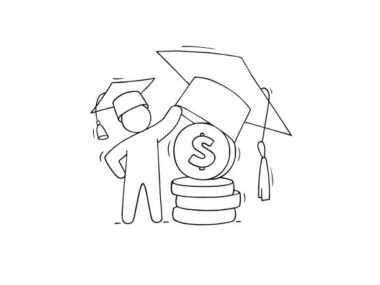In a world where education is the key to unlock endless opportunities, pursuing a secondary education degree can be the master key for those aspiring to shape minds during the most pivotal stages of development—adolescence. This comprehensive degree equips future educators with the necessary skills and knowledge to thrive in high school classrooms, nurturing the young intellectuals of tomorrow.
Let’s embark on an explorative journey through the facets of secondary education degree programs and their invaluable impact on global education.
Secondary Education Degree Programs
Understanding the ins and outs of secondary education degree programs is the foundation for a successful career in education. These programs are tailored for those who hold a passion for teaching and a commitment to the academic and personal growth of adolescents in grades 9 through 12.
The multifaceted curriculum merges pedagogical theory with subject-matter expertise and hands-on experience, ensuring graduates are more than ready to take on the chalkboard.
Programs within secondary education are a hybrid of innovative teaching practices and foundational traditions. Students immerse themselves in courses designed to:
Integrate educational technology, acknowledging its growing role in modern classrooms.
Delve into the psychology of adolescence to better understand student behavior and learning.
Embrace inclusive teaching strategies to meet the needs of diverse learners.
Even more, accreditation and certification particulars are cornerstone considerations of these programs, which anticipate and address the nuances of geographic and regulatory requirements.
Now, let’s break down the essence of a secondary education degree and the transformative impact it promises for aspiring educators.
1. What Is A Secondary Education Degree?
A secondary education degree is the beacon that guides students through the sometimes choppy waters of middle and high school education. Your degree is not just a certificate; it is an amalgam of pedagogical structure and content wisdom, fortified through practical application in the classroom setting.
Individuals with this degree come out proficient in:
- Crafting comprehensive teaching methods.
- Grasping adolescent psychology.
- Developing rich, adaptable curricula.
- Specializing in diverse subjects ranging from the natural sciences to the fine arts.
- Engaging in student teaching internships to sharpen classroom management skills.
The legwork of becoming well-versed in educational theories paves the way for not just teaching but also obtaining the necessary teaching licenses. With this groundwork established, the subjects you can cover at completion are as broad and varied as the students you will inspire.
2. What Subjects Can I Teach With A Secondary Education Degree?
Stepping into the world of education with a secondary education degree opens doors to teaching a plethora of subjects, with the curriculum designed to be as eclectic as the interests of high school students.
Below are examples of subjects you might teach:
English: Dive deep into literature and composition, guiding students through the classics and modern works alike.
Mathematics: From algebra to calculus, help unravel the mysteries of numbers and their practical applications.
Science: Engage in the exploration of biology, chemistry, or physics, igniting curiosity about the natural world.
History: Take students on a journey through time, examining the events that have shaped humanity.
Foreign Languages: Encourage global communication skills by teaching Spanish, French, or Mandarin.
Beyond these core academic avenues, you may also choose to specialize in the arts or physical education. Should your passion extend into specialized subjects, additional certifications further embellish your teaching credentials.
3. How Long Does It Typically Take To Complete A Secondary Education Degree?
The journey to earning a secondary education degree involves a clear understanding of the time investment required. For those embarking on this path in the United States, the pursuit typically spans four years of full-time study. However, various pathways can adjust this timetable:
Accelerated Programs: Ideal for the driven student, certain universities offer shortened courses of study.
Part-Time Studies: For those juggling other commitments, a more flexible, albeit extended, timeline is possible.
Transfer Credits: Previous college coursework might also expedite the graduation process.
While the bachelor’s degree remains the bedrock, additional certifications or a master’s degree can further extend both the time and expertise of an educator.
4. What Are The Requirements For Enrolling In A Secondary Education Degree Program?
Before diving headfirst into a sea of knowledge, it’s crucial to be prepared for the eligibility tide that awaits. Enrollment prerequisites vary, but generally include:
- A high school diploma or equivalent.
- A minimum GPA, providing a snapshot of your academic capability.
- Standardized test results, reflecting your potential to manage higher education courses.
- Personal essays or recommendation letters, offering a glimpse of your character and motivations.
- Specific course prerequisites in key subjects, ensuring a comprehensive educational foundation.
These requirements are the stepping stones on which aspiring educators will build their futures in teaching, guaranteeing a preparedness for the academic and practical challenges ahead.
5. Can I Pursue A Career In Education With A Secondary Education Degree If I Do Not Want To Teach?
A secondary education degree opens doors beyond the traditional classroom, offering a realm of career opportunities for those drawn to educational outreach but not necessarily to teaching. Here’s a snapshot of alternative paths:
- Curriculum Design: Innovate and influence what students learn.
- Educational Policy: Participate in the decision-making processes that shape educational systems.
- Community Outreach: Work in programs promoting literacy and learning outside traditional school environments.
- Corporate Training: Harness educational skills to enrich workforce development.
Additional education and certifications broaden these prospects even further, heralding a robust career in various facets of the educational spectrum.
Secondary Education Degree Online
The rise of online education has made pursuing a secondary education degree more accessible than ever. Through this modality, students can engage with coursework and immersive learning experiences virtually, perfect for those who require a degree of flexibility in their studies.
Features of an online secondary education degree program include:
- Classes that span the latest in educational theory and practice.
- Interactive assignments that promote engagement with peers and professors.
- Opportunities for field experience, arranged in partnership with local schools.
An online degree can be the launchpad to becoming a teacher or an educational professional while navigating the diverse requirements for certification wherever your career may take you.
Secondary Education Degree Requirements
When delving into the realm of secondary education degree requirements, it’s crucial to appreciate the multifaceted nature of the qualifications needed to excel in this field. A secondary education degree prepares future educators to not only disseminate knowledge to students in grades 7 through 12 but to also understand the developmental intricacies of adolescents.
Academic Prerequisites
At the core of secondary education degree requirements is a solid foundation in the subject matter the educator plans to teach. Whether it’s mathematics, science, English, history, or a foreign language, in-depth content knowledge is key. Degree seekers are often required to have a minimum number of credit hours in the subject area of their choice.
Example Coursework:
Core Subjects: This might entail advanced courses in literature for aspiring English teachers or a series of calculus and algebra courses for future math teachers.
Education Theory: Students also engage in various pedagogical courses, where they learn the principles of teaching and educational psychology. These courses equip them with a deep understanding of how students learn and how to best facilitate that learning.
Teaching Methods: There will be a focus on methods specifically designed for teaching at the secondary level. Each subject area has its unique methodologies, catering to the different ways students interact with the material.
Practicum And Student Teaching
Practical experience is another cornerstone of a secondary education degree program. Students are required to complete a certain number of hours in classroom observations and student teaching. This direct exposure to the classroom setting is invaluable and often shapes the prospective teacher’s approach to their future career.
Observation Hours: These are typically spread throughout the program and allow students to witness and reflect on effective teaching strategies.
Student Teaching: This is the capstone experience of most secondary education programs. Candidates spend an extended period, often a semester, under the mentorship of a seasoned teacher. They gradually take on more teaching responsibilities, ultimately leading the class to gain hands-on experience.
Licensure
To actually teach at a public secondary school, educators must be licensed. This often involves passing a series of certification exams that test both subject area knowledge and understanding of pedagogical principles.
State-Specific Requirements: It’s important to note that licensure requirements can significantly vary by state. Future educators should familiarize themselves with the details pertaining to the state in which they wish to teach.
Continuing Education: To maintain their licensure, secondary educators are required to engage in ongoing professional development, ensuring they remain at the forefront of educational practices and content knowledge.
Obtaining a degree in secondary education requires a commitment to comprehensive academic study, coupled with hands-on training in a real-world classroom environment.
Secondary Education Degree Colleges
The institutions shaping our future educators are pivotal in the landscape of secondary education. These colleges provide:
- Comprehensive academic and instructional training.
- Robust teaching internships to marry theory with practice.
- Bachelor and Master degree options with a spotlight on pedagogical excellence.
Accreditation confirms the quality of these courses of study, ensuring graduates emerge fully prepared to foster learning, innovation, and passion in the classrooms of tomorrow.
Understanding Secondary Education: Is It Equivalent to High School?
The term “secondary education” often brings to mind the concept of high school, but are they actually the same thing? In the simplest terms, secondary education can indeed be synonymous with high school, but the relationship between the two is a bit more nuanced.
The Stages of Education
To understand the context of secondary education, we must first look at the education system as a whole, which is commonly divided into three levels:
1. Primary Education: This is the initial stage of formal education and typically includes kindergarten through to fifth or sixth grade.
2. Secondary Education: It’s the next tier following primary education and generally covers education from around sixth or seventh grade to twelfth grade, depending on the country’s system.
3. Tertiary Education: Also known as higher education, it encompasses all postsecondary education, including vocational schools, colleges, and universities.
Secondary Education Breakdown
In many regions, secondary education itself is divided into two phases—sometimes referred to as lower secondary and upper secondary. Here’s how they usually break down:
Lower Secondary Education: Often considered as middle school or junior high, this phase covers grades six (or seven) through eight (or nine) in many education systems.
Upper Secondary Education: This segment is what most people refer to as high school, spanning from ninth (or tenth) through twelfth grade.
High School: A Closer Look
When people inquire about “secondary education,” they’re often referring particularly to the high school phase, where students typically range in age from 14 to 18 years old. High school is a foundational period in education where students take on more specialized subjects, such as algebra, biology, literature, foreign languages, and an array of electives.
It’s a time for greater intellectual challenges and personal growth, where students begin to contemplate their future career paths, perhaps taking advanced placement courses or vocational training to prepare for their next steps in education or the workforce.
Secondary education does encompass high school, but it also covers the period shortly before what many consider to be high school. It is a critical phase in the educational journey, setting the stage for academic achievements and life skills that will carry students into adulthood.
By recognizing the intricate relationship between secondary education and high school, we can appreciate the diverse experiences and opportunities that shape young learners during this pivotal time in their lives.
Stepping Stones to Educational Excellence
Charting a course through the dynamic world of a secondary education degree reveals much more than a path to becoming a high school teacher. It unveils a world replete with possibilities, where the skills acquired are as relevant in the classroom as they are in policy, administration, and beyond.
That world is waiting, and the trailblazers with the right credentials will be the ones to shape it. Are you ready to make your mark?
Those who pursue a secondary education degree open themselves up to an expansive horizon of opportunities that stretch far beyond teaching. This journey equips individuals with a versatile set of skills that prepare them to influence and innovate in various spheres of the educational landscape.
Whether you aspire to guide young minds in the classroom, design impactful educational policies, or take the helm in administrative roles, the knowledge and experiences you gain from this degree form the foundation of your future success.
The path to educational excellence beckons—the question isn’t whether the opportunities exist, it’s whether you’re ready to seize them and turn your vision for a brighter educational future into reality. Take the step, embrace the challenge, and emerge as a leader poised to make a significant imprint on the world of education.






